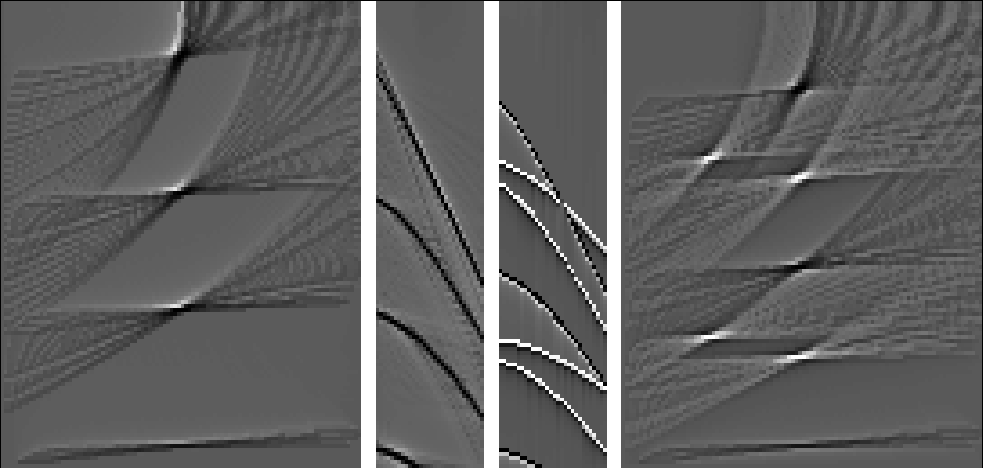subroutine vspray( adj, nt,dt,t0, nx,dx,x0, tx, ns,ds,s0, zs)
integer adj, it, nt, iz, nz, ix, nx, is, ns, isp, ism
real tx(nt,nx), zs(nt,ns), scale
real z,dz,z0, t,dt,t0, x,dx,x0, s,ds,s0, sm,sp, xm,xp, tm,tp
nz=nt; dz=dt; z0=t0;
call adjnull( adj, 0, tx, nt*nx, zs, nz*ns)
if( adj == 0) { do ix=1,nx; call halfdif ( 1, nt, tx(1,ix), tx(1,ix) )}
do iz= 1, nz { z = z0 + dz*(iz-1)
do ix= 1, nx { x = x0 + dx*(ix-1)
do it= iz, nt { t = t0 + dt*(it-1)
tm = t-dt/2; xm = x
tp = t+dt/2; xp = x
sm = (tm**2 -z**2)/xp**2; ism = 1.5+(sm-s0)/ds
sp = (tp**2 -z**2)/xm**2; isp = 1.5+(sp-s0)/ds
if( ism<2 ) next
if( isp>ns) next
scale = sqrt( t / (1.+isp-ism) ) / ( abs(x) + abs(dx)/2.)
do is= ism, isp {
if( adj == 0)
zs(iz ,is) = zs(iz ,is) + tx(it ,ix) * scale
else
tx(it ,ix) = tx(it ,ix) + zs(iz ,is) * scale
}
} } }
if( adj != 0) { do ix=1,nx; call halfdif ( 0, nt, tx(1,ix), tx(1,ix) )}
return; end
